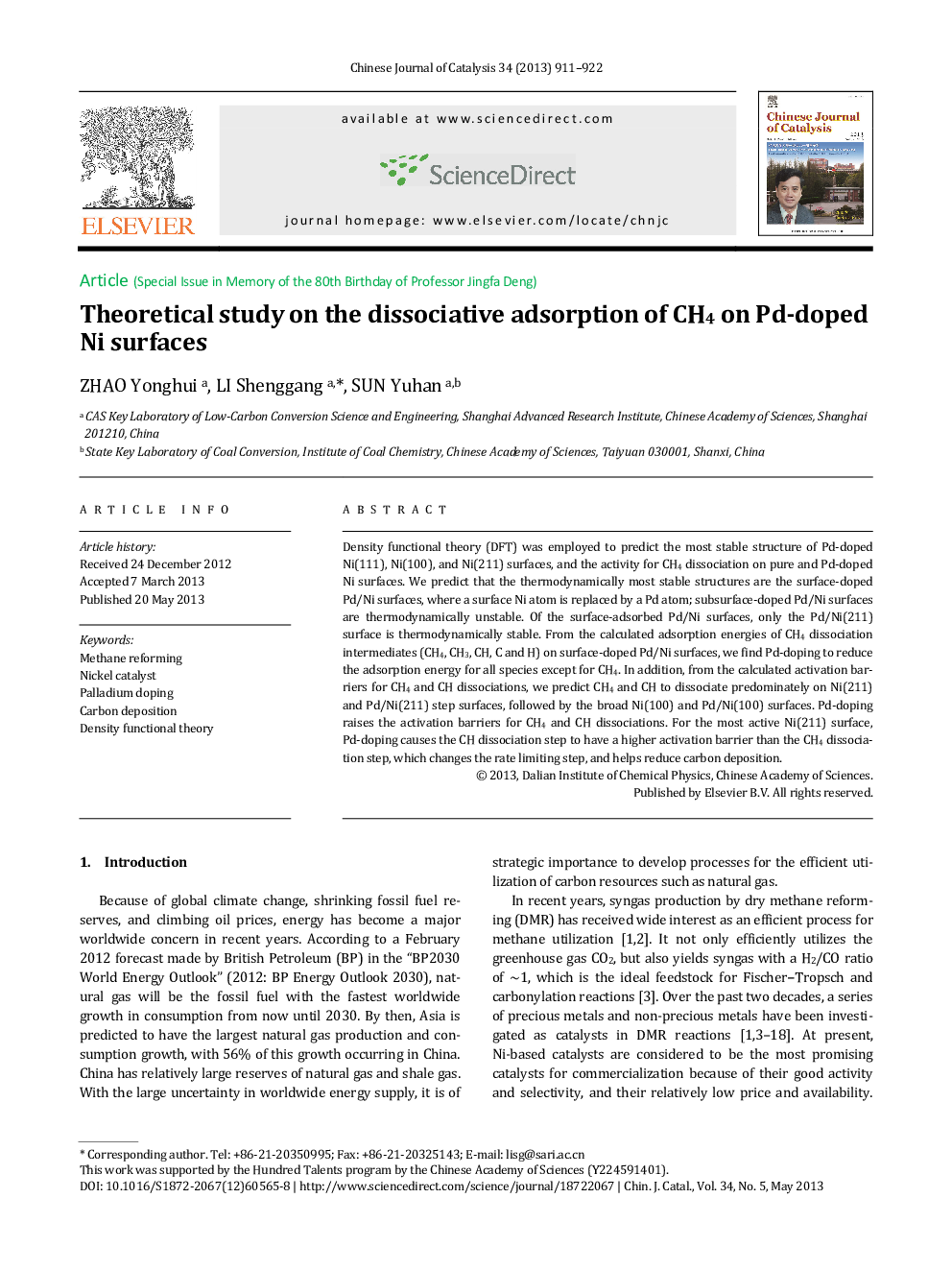| Article ID | Journal | Published Year | Pages | File Type |
|---|---|---|---|---|
| 60161 | Chinese Journal of Catalysis | 2013 | 12 Pages |
Density functional theory (DFT) was employed to predict the most stable structure of Pd-doped Ni(111), Ni(100), and Ni(211) surfaces, and the activity for CH4 dissociation on pure and Pd-doped Ni surfaces. We predict that the thermodynamically most stable structures are the surface-doped Pd/Ni surfaces, where a surface Ni atom is replaced by a Pd atom; subsurface-doped Pd/Ni surfaces are thermodynamically unstable. Of the surface-adsorbed Pd/Ni surfaces, only the Pd/Ni(211) surface is thermodynamically stable. From the calculated adsorption energies of CH4 dissociation intermediates (CH4, CH3, CH, C and H) on surface-doped Pd/Ni surfaces, we find Pd-doping to reduce the adsorption energy for all species except for CH4. In addition, from the calculated activation barriers for CH4 and CH dissociations, we predict CH4 and CH to dissociate predominately on Ni(211) and Pd/Ni(211) step surfaces, followed by the broad Ni(100) and Pd/Ni(100) surfaces. Pd-doping raises the activation barriers for CH4 and CH dissociations. For the most active Ni(211) surface, Pd-doping causes the CH dissociation step to have a higher activation barrier than the CH4 dissociation step, which changes the rate limiting step, and helps reduce carbon deposition.
摘要使用密度泛函理论研究了Pd掺杂的Ni(111), Ni(100)和Ni(211)表面最稳定的结构, 同时考察了干净的和Pd掺杂的Ni表面催化CH4解离反应的活性. 结果表明, 由Pd原子取代最外层Ni原子而形成的表面Pd掺杂的Ni表面在热力学上最为稳定, 亚表面Pd掺杂的Ni表面在热力学上都不稳定; 而对于表面Pd吸附的Ni表面, 只有Pd/Ni(211)表面是稳定的. 表面掺杂的Pd/Ni表面上CH4解离中间体(CH4, CH3, CH, C, H)吸附能的计算结果表明, Pd的掺杂在不同程度上减弱了除CH4之外各解离中间体的吸附能. 另外, CH4和CH均优先在Ni(211)和Pd/Ni(211)台阶面上解离, 其次是在比较开阔的Ni(100)和Pd/Ni(100)表面上. Pd的掺杂不同程度上提高了CH4和CH解离的能垒, 对于活性最高的Ni(211)面, Pd的掺杂使得CH脱氢的能垒较CH4脱氢的高, 改变了其速率控制步骤, 从而抑制了积碳的生成.
Graphical AbstractPeriodic density functional theory calculations show that CH4 and CH dissociate predominately on the Pd/Ni(211) step surface rather than the closely packed Pd/Ni(111) surface. For the most active Ni(211) surface, Pd-doping causes CH dissociation to have a higher activation barrier than CH4 dissociation, which changes the rate limiting step, and helps reduce carbon deposition.Figure optionsDownload full-size imageDownload as PowerPoint slide
